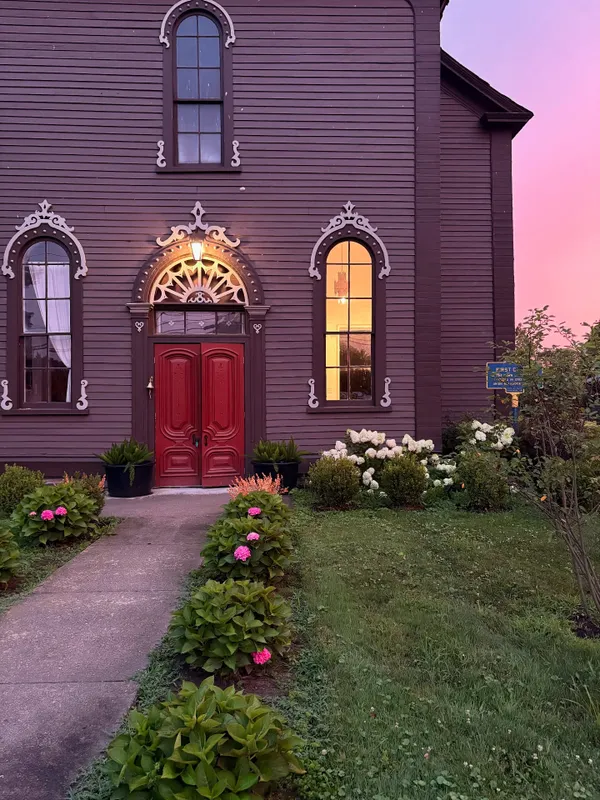Today’s roundup spotlights four compelling shifts shaping housing and finance: the evolving average age of first-time homebuyers, a surprising quantum computing boost to commercial real estate, creative church-to-residential conversions, and the record surge in non-QM mortgage lending. These insights blend timely data and unusual trends in the industry—stories that not only inform, but also inspire possibilities for mortgage professionals, real estate agents, and consumers alike. Let’s explore how they’re redefining strategies and opportunities amidst an otherwise challenging market narrative.
Average Age of First-Time Home Buyers Holds Steady—and Lower Than 2000s
Read the Full Story → Wolf Street
The average age for first-time buyers rose slightly to 36.3 years in 2024, up from 35.7 in 2023. Despite this increase, the number remains within a tight band of 35.5 to 36.4 years that’s held steady since 2012. Interestingly, this is still younger than it was in the early 2000s, when the average peaked at 37.9.
Repeat buyers, on the other hand, have seen more significant aging. Their average age has increased from 44.4 in 2003–04 to 47.9 in 2024, reflecting both demographic trends and economic headwinds that delay subsequent purchases.
First-time buyers continue to be a larger slice of the market, making up 35% of purchase volume in 2023. As seasoned buyers stay sidelined by high rates and low inventory, newer entrants are stepping up to keep the market active.
Quantum Computing Could Become Commercial Real Estate’s Next Tailwind
Read the Full Story → CNBC
Quantum computing, still in its early commercial stages, is poised to impact commercial real estate in much the same way that AI drove demand for data centers. As new technologies require increasingly advanced infrastructure, real estate must evolve to meet their needs.
Experts predict a growing market for quantum-adapted spaces that accommodate cooling requirements, electromagnetic shielding, and proximity to power grids. This could revive underused industrial properties and create new development opportunities.
While still nascent, this trend could reshape site selection, investment, and leasing strategies for tech-driven tenants—and investors who recognize the value early.
Empty Churches Convert to Residential Uses: A Growing Trend
Read the Full Story → USA Today
Across the country, declining church attendance and building maintenance costs are leading many congregations to sell or repurpose their properties. A growing number are being converted into homes, apartments, or community living spaces.
These adaptive reuse projects preserve architectural character while solving housing shortages, especially in older urban areas. They appeal to buyers seeking unique homes and developers looking for ready-to-use structures.
Challenges include zoning hurdles, historical preservation, and community sentiment. Yet where successful, these conversions offer creative solutions to local housing needs and breathe new life into otherwise vacant buildings.
Non-QM Lending Hits Record High in July
Read the Full Story → Scotsman Guide
Non-qualified mortgage (non-QM) lending reached an all-time high in July, comprising 8% of total mortgage rate locks. This milestone comes as lenders adapt to serve borrowers who don’t meet traditional criteria.
Despite a 3% drop in overall rate locks and a 5% dip in purchase activity, refinance demand saw slight gains. Cash-out and rate-and-term refinances rose by 5% and 7%, respectively, offering some relief in a tight market.
The rise in non-QM loans signals a broader acceptance of flexible underwriting, creating opportunities for self-employed borrowers, investors, and others with complex income situations.
Loan Officer Perspective
The average age of first-time buyers proves there’s still strong demand from younger clients—use this to reassure hesitant prospects. Non-QM growth highlights the importance of knowing alternative loan products to serve a broader base. And if you’re looking to expand your niche, unique properties like converted churches or developments near quantum facilities might offer new business opportunities.
Real Estate Agent Perspective
Stability in buyer age means the pipeline isn’t shrinking—it’s just shifting. Understanding local zoning and creative conversions like churches can differentiate your listings. Partnering with lenders familiar with non-QM options can also help more buyers get approved in today’s environment.
Home Buyer & Seller Perspective
Thinking of buying your first home? The average age shows you’re not late to the game. If you’re selling or holding a unique property, now might be the time to explore its potential. And for buyers with non-traditional income or credit profiles, non-QM loans might be your path forward.
Contact the professional who shared this post to explore your options and ask any questions you have about buying or selling a home.
Frank’s Thoughts
I found the quantum computing and church conversion stories especially refreshing. They’re not the kind of headlines we typically see in this business, and they offer some much-needed creativity and hope in a tough market.
The data on first-time buyer age is a powerful tool. It counters the doom-and-gloom narrative and shows that people are still buying homes at consistent ages. That’s an important message for both loan officers and consumers.
The non-QM lending surge doesn’t surprise me. It’s a critical part of the market, and one that real estate and mortgage pros need to master. These loans are becoming a necessity, not a niche.
Powered by: Mortgage Marketing Animals
Important Links





